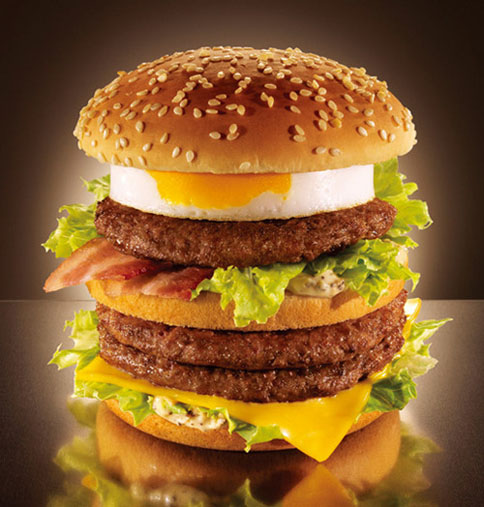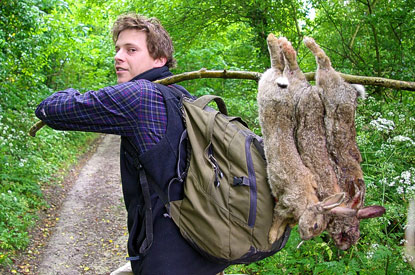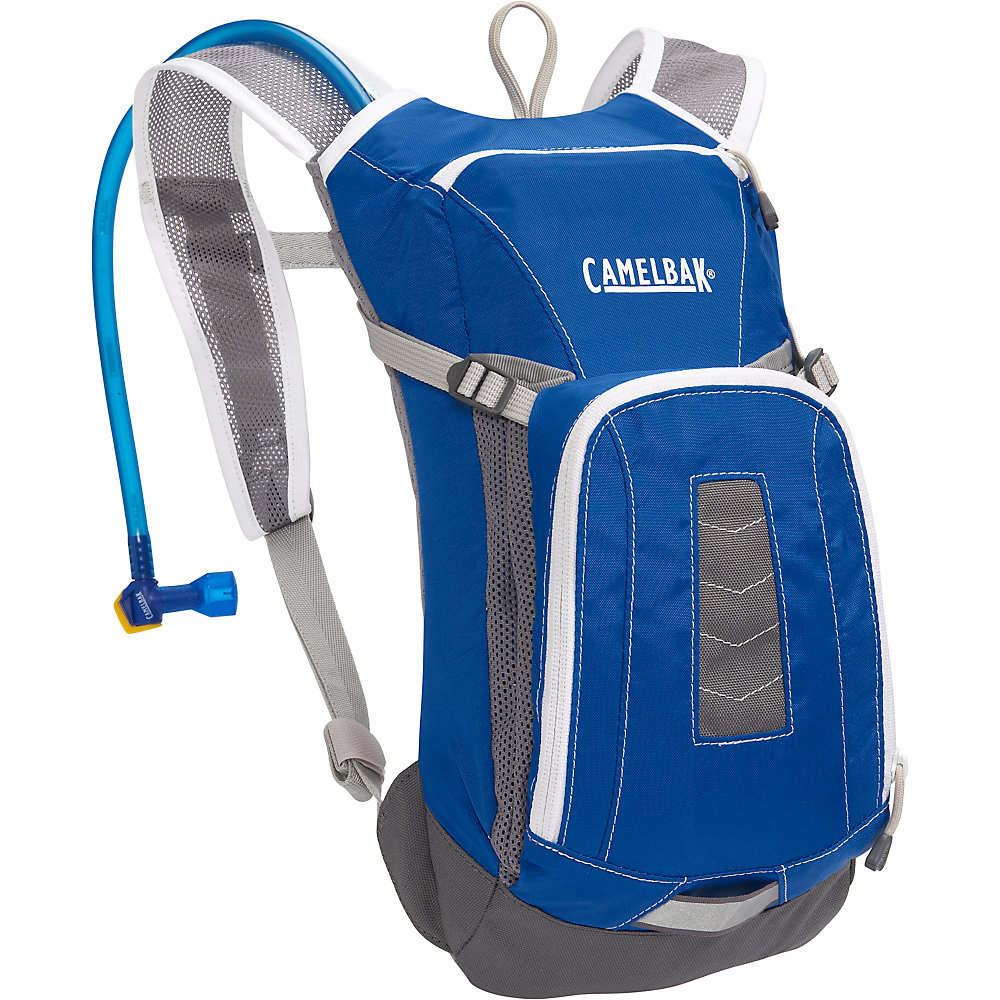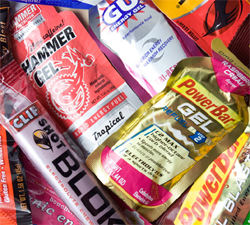 There are few things in life worse than bonking on a bicycle (did I really just say that?). What I mean is; running out of food and having a sugar flat, hitting the wall, experiencing glycogen depletion, dehydration...in other words you get hungry. Really, really hungry.
There are few things in life worse than bonking on a bicycle (did I really just say that?). What I mean is; running out of food and having a sugar flat, hitting the wall, experiencing glycogen depletion, dehydration...in other words you get hungry. Really, really hungry.
Is there a greater hell than having a major sugar crash on a big ride and pedaling past a hamburger joint with that sweet fatty aroma permeating the air?
There really isn't, i've checked.
So how to avoid the horror of getting hungry and thirsty when riding?
1. Eating Food
Yeah, eating. Be warned - this is a very complex and technical article about nutrition. The number one technique is to eat! Keep the food going in for the whole ride. You don't need to measure amounts based on body weight and all that stuff, just keep munching small amounts regularly.
A handy technique is to set a timer on your bike computer or just use a watch and eat every 45 minutes. Simple.
This way you can avoid spikes and crashes as your sugar levels go up and down.
2. Drinking Water
Complicated technique number two! "Water, water everywhere, but not a drop to drink" - The ancient mariner knew it really sucked to be thirsty. As with eating, drink regularly.
If you leave it till you feel really thirsty it's too late, you're already dehydrated and you will never catch up with your body from here. Water is the most important nutrient you can put in your body, especially when riding.
Dehydration causes major decreases in physiological efficiency, in other words; you really start to suffer from here on in.
As with eating, constant sipping from a bidon or hydration pack is the key.
Really uncool on a road bike, but this is a mountain biker's best friend (apart from the bike which is pretty special too). Hydration packs allow you to carry fluid and food.
The best thing is it is very easy to sip constantly on the move with both hands still on the bars. Important when MTBing.
Examples: Camelbak MULE, Hydrapak Soquel, Deuter HydroLite 2.0
4. Breakfast
A good breakfast sets up the tone of the ride. Porridge made from wholegrain oats and a banana is my choice. The worst choice I have made is a sausage muffin from a well known drive thru restaurant while in a rush to meet friends on the trail. It ended up as a new and interesting (if slightly smelly) singletrack obstacle.
The lesson: fatty food doesn't sit so well when you really start pushing your body, so avoid the morning fry up and eat good stomach food!
5. Carbs
Carbohydrates replace glycogen which is where your energy comes from. When this runs out, you bonk, and that's no fun. Carbohydrates come in many forms and there are some products available specifically tailored towards sports like cycling.
On the home-made front, try peanut butter sandwiches with white bread and the crust removed, or store bought fruit cake is a good one.
A great way to address all your bicycle related dietary needs is with carbohydrate bars and gels. They are easy to stow in your jersey pocket and are designed specifically to fuel a body on a bike. Getting food down when working your body hard can be difficult. You know you need to eat, but your stomach feels tight and food seems unappetising.
Gels in particular are good to use in these situations and when racing. Rip off the top and suck the goo in (make sure you also drink plenty of water to prevent stomach cramps).
Bars also are so jammed packed full of good stuff that you can just nibble a bit here and there to fulfil your needs.
Examples: Powerbar Performance, High 5 energy gel, GU chocolate outrage
Sugar refuel complete, now salt. Ever been out riding on a hot day and ended up with white salt crystals on your jersey from sweating? This salt needs to be replaced before muscle cramp sets in. Electrolyte refuelling is achieved with either an isotonic drink or powder that is added to water.
On a long ride, carry one water bottle and one isotonic bottle or alternatively a hydrator with water and an isotonic drink on the bike. Many isotonic drinks also fulfil some sugar replenishment needs as well.
Examples: Torq Natural, Hammer endurolytes
The king of the elements. Magnesium is one of the most important nutrients our body uses (particularly the muscles). Unfortunately it is very difficult to obtain from our regular diet. Magnesium helps muscle efficiency, prevents cramps and is vital for our bodies to function to their full potential.
It is included in many products, but be careful... Magnesium in certain forms can irritate the bowel, and some brands may result in stomach upset or other digestive issues. Test any new product in less extreme situations before relying on it during a long ride or race.
Examples: Endura MAX
9. Money
This technique works better road riding than mountainbiking. Carry ten bucks and buy food when you get hungry.

10. Hunting and Foraging
Many mini tools come equipped with a small knife. This may not be enough to bring down large prey but you could probably skin and gut some fresh road kill without too much difficulty. What you do from here is your own business.
Foraging for roots and berries is a pretty dumb idea really. Nicking a sausage off a barbeque or pie from a window sill is probably more likely. A fit cyclist is well equipped to then make a speedy getaway.




